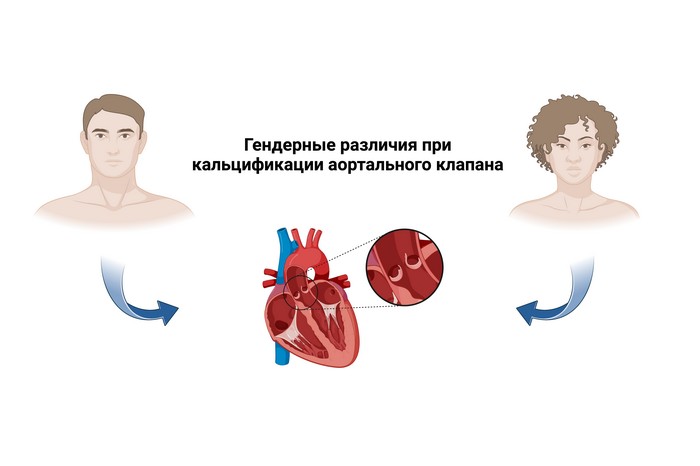
Gender differences in aortic valve calcification: new evidence from the Research Laboratory of Excessive Calcification Diseases
Scientists at the Research Laboratory of Excessive Calcification Diseases of the WCRC for Personalized Medicine have shown for the first time that there are significant gender differences in aortic valve calcification.
The scientists conducted a series of experiments to study gender differences in aortic valve calcification. By analyzing clinical and histological data, they found that there are significant gender differences in the indicators of inflammatory processes in the valve leaflets, as well as in the rates of peri- and postoperative complications and mortality. The study included 21 experiments involving 10 males and 11 females using a platform designed to study osteogenic differentiation. The collected data was subjected to multi-omics analysis for additional information.
Aortic stenosis (AS) is more common in men, especially in younger patients (linked to bicuspid aortic valve), while after 75 years of age, the female sex seems to be more prevalent. The male sex is a non-modifiable risk factor for the development of AS. Although the articles highlight gender differences in the processes of aortic valve calcification, the ultimate effect of gender on pathogenesis remains uncertain. It is worth noting that postoperative outcomes differ between men and women, with better survival observed in men after aortic valve replacement and in women after transcatheter aortic valve implantation (TAVI).
Women have more pronounced concentric left
ventricular hypertrophy (LVH) with less early diastolic relaxation of the left
ventricle (LV) than men with the same severity of AS. Studies show that males
are more likely to have an extended phenotype with lower ejection fraction,
larger chamber sizes, and higher volume index, while females tend to have
concentric LVH in most cases. Women also have higher valve gradients, greater
relative LV wall thickness and more preserved LV ejection fraction. Female patients
tend to suffer from congestive heart failure with preserved ejection fraction, whereas
male patients are more often diagnosed with chronic heart failure with reduced
ejection fraction. In general, men have a more maladaptive LV response to
increased exercise due to a greater activation of profibrotic and inflammatory
processes, such as activation of myofibroblasts, RAAS, and the TGF-β
signaling pathway, compared to women. Excessive fibrosis and remodelling of the
extracellular matrix contribute to LV dilatation and reduced ejection fraction.
